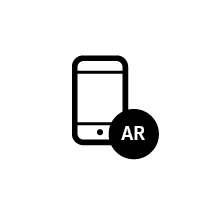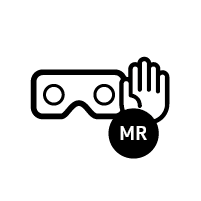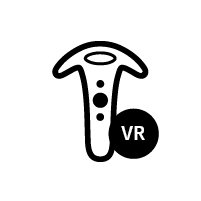Pattern Libraries for Extended Realities
All over the world, designers and developers are working on new extended realities applications. In contrast to web or mobile applications, however, there are as yet no established UX patterns that designers can fall back on to make it easier for users to get started or to create recognition value in the sense of the brand. If good examples of user experience and visual design emerge in XR projects (design patterns), it is worth documenting them in a dedicated online library. In this way, future XR projects can be developed much faster.
Benefits of pattern libraries for XR
A pattern library makes it possible to move XR projects forward more quickly because applications do not have to be developed from scratch. Instead, designers and developers can use existing patterns for user experience and visual design or develop new patterns based on them.
The existing patterns also ensure consistent design. This is particularly important in extended realities projects, as applications are developed for very different viewing situations (screen, VR, Hololens) and interaction possibilities (touch, controller, gauze, gesture) within the same brand.
In XR, a brand is allowed to be much more innovative and courageous, in line with user expectations, and to combine familiar elements with something new. The entire corporate design can benefit from these new impulses and adopt new design aspects.
Working on the pattern library also helps to establish a structured design process. The design patterns are processed in a structured manner according to their prioritization and supplemented in a sensible, forward-looking manner.
How To
A company-wide pattern library can only be developed on the basis of real projects that involve real requirements. It is important that the basic conditions of the design work are right: work must be consistently user-centered, in the sense of the brand, and with a constant view of the various requirements. If the conditions are right, a consistent and sustainable pattern library will emerge step by step.
A stable foundation for this is the brand strategy. The Branded Interactions Design process has also proven itself in extended realities projects: design principles for the various design disciplines, such as look & feel and user guidance, are developed in accordance with the brand values. These can be extended to include XR-specific aspects such as environment, force feedback or sound. On this basis, a mood board is developed that shows the cornerstone for the general look & feel.

The design team can now work through the design patterns in individual sprints.
Ideally, each new pattern is elaborated directly for the different technologies so that developers and designers can later use them in corresponding projects.
At the end of each sprint, the resulting patterns are entered as a draft in the online pattern library – for example in Frontify – so that the coordination with the product owner can take place directly there. After the coordination, the patterns are finally made available to the other teams.
A pattern library can only function if it is viewed as a flexible and living document that is continuously developed further through input from new projects and feedback from users and designers.
Controls
When developing design patterns, designers should consider the different interaction possibilities and plan and develop patterns with foresight.

Touch Screen
In screen-based augmented reality, the user moves the mobile or tablet device to discover the augmented reality and interacts using touch gestures.

Gaze
Gaze control tracks the position of the headset. A ‚reticle‘ – a kind of virtual crosshair – is used to target and select objects.

Gaze and Commit
Gaze and Commit combines gaze controls for selection with the simplicity of gesture controls to interact with virtual objects.

Gesture
Users can see a virtual version of their hands in VR and interact with objects, the environment and navigation elements using gestures.

Controller
Controllers are familiar to most people from the gaming world and allow users to perform complex tasks in VR.
Structure for a Pattern Library
Due to the different technologies, an XR pattern library can become very extensive. A well thought-out structure at an early stage helps designers, developers and product owners to find the right patterns for their project.
In principle, the patterns should be sorted by controls. Within these supercategories, the patterns can be structured like this, for example:
– Usability Essentials
– Design Basics
Design Patterns
General Style and Behaviour
Behaviour of Interactive Elements
Transitions
Reticle
Interacting with the Application
Splash Screen
Loader
Hints
Menu
…
Interacting with Objects
Selecting Objects
Positioning Objects
Hotspots
Text
Layer
…
Interacting with the Environment
Scanning for Space
Changing the Environment
…